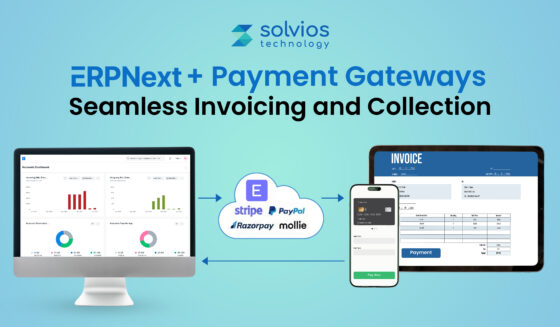
Introduction
Is your current CRM or ERP holding you back?
Sounds intriguing, right?
Sadly, this could be the reason for your slow operations.
Speed in your workflow is no longer a bonus; it’s expected. Customers want fast delivery and faster services.
Similarly, leaders want prompt insights into operations without having to analyze a dozen dashboards. Businesses today rely on their tech stack to do more than just “manage data.”
But if your business continues to cling to legacy systems, your operations could be paying a cost with:
- Missed opportunities due to siloed data
- Frustrated employees dealing with clunky processes
- Growing IT expenses to patch up legacy platforms
- Inability to pivot quickly as the business evolves
So if your CRM or ERP feels more like a bottleneck than a boost, it might be time to rethink.
This blog examines seven clear signs that your operations have outgrown your current systems. Let’s get started.
Sign #1: Your System Can’t Keep Up — Time to Migrate to Dynamics 365
Having a growing company is the entrepreneur’s dream, unless your tech stack isn’t keeping up with the pace.
As you expand your operations, you may encounter unique challenges where your CRM falls short in processing records. Or, your ERP could take a few minutes to load a simple report.
Sounds familiar? Here are some other common problems to look out for:
- Sluggish response times during peak usage
- Frequent timeouts or data syncing errors
- Inability to onboard new users or departments without major delays
- Reporting dashboards are crashing with large datasets
These aren’t simply bottlenecks; they cost you agility, productivity, and revenue. Interestingly, this is where Microsoft Dynamics 365 migration could be a game changer.
Why Microsoft Dynamics 365 Migration Supports Business Growth?
a. Modular architecture: Add only the apps you need, when you need them.
b. Cloud-native infrastructure: Handles traffic spikes and large datasets effortlessly.
d. Seamless integrations: Easily connects with Power BI, Teams, Outlook, and third-party apps.
Whether you’re expanding your sales team or scaling to new locations, Dynamics 365 adapts without making you start from scratch.
Sign #2: Disconnected Tools and Siloed Data
Your teams might be using best-in-class tools, but if they don’t communicate, you’re operating without insights.
There is a chance that your sales data resides in one platform, customer service notes in another, and marketing insights in a spreadsheet that requires manual updates.
Think you don’t have disconnected data silos? Here are some signs to watch out for:
- Manually importing/exporting data between platforms
- Duplicate records and conflicting customer info
- Fragmented workflows across departments
- Missed insights due to inconsistent reporting
Disconnected systems create blind spots, resulting in lost time, money, and trust. However, here’s how Dynamics 365 steps into the picture.
Dynamics 365 Data Migration: A Solution to Siloed Tools
a. Unified data model: Breaks down silos across sales, marketing, service, and operations.
b. Native integrations: Connects seamlessly with Power BI, Teams, Outlook, and SharePoint.
c. Single customer view: Teams access real-time, accurate data from one shared platform.
With Dynamics 365, your tools become a connected ecosystem—so your team can work smarter, not harder.
Sign #3: Reporting Is Slow, Manual, or Inaccurate
You shouldn’t need a full day or a full team to build a basic report!
If your team is still copying data into spreadsheets, troubleshooting broken formulas, or reconciling numbers from different systems, your reporting process is doing more harm than good. By the time insights are ready, they’re already outdated.
Here are some signs that indicate your reporting is slow:
- Sales and operations reports don’t align
- KPIs are scattered across tools and tabs
- Decision-making is reactive, not proactive
- Leadership wastes time validating data sources
Manual reporting isn’t just slow; it also risks compromising your operations.
How Microsoft Dynamics 365 Migration Solves Reporting Issues?
a. Intuitive Dashboard: Real-time dashboards powered by Power BI for always-current visibility.
b. Custom KPIs: Custom KPIs tailored to your business, updated automatically.
c. Predictive Analysis: Predictive analytics to surface trends before they impact performance
With D365, you spend less time chasing numbers and more time acting on them.
Thinking about upgrading to Dynamics 365?
Contact us NowSign #4: Teams Are Using Workarounds and Spreadsheets
If your CRM or ERP is so challenging that your team avoids it, that’s a red flag.
Here are some signs your team is relying on workarounds and spreadsheets:
- Data lives in personal spreadsheets, not the system
- Users resist logging into the CRM or ERP
- Teams rely on manual processes or external apps
Workarounds may solve the short-term problem, but they quietly erode performance, data integrity, and team morale.
Why Dynamics 365 is Different?
- Intuitive Design: Modern, user-friendly interface designed for adoption
- Unique Dashboard: Customizable dashboards and workflows that align with how your teams work
- Part Automation: Role-based automation to eliminate repetitive tasks and streamline day-to-day operations
With Dynamics 365, your system becomes the path of least resistance, not the last resort.
Sign #5: Lack of Mobile Access and Remote Collaboration
In today’s hybrid world, your systems need to adapt to your team’s needs. If your CRM or ERP feels like a “desktop-only” experience, you’re already behind.
Whether it’s a sales rep updating leads from the road or a service tech accessing client history on-site, real-time access is now a baseline expectation.
Here’s what real-time operations look like in practice:
- Sales teams can’t update pipelines until they’re back at their desks
- Field reps have no visibility into customer data on-site
- Managers lose momentum waiting for end-of-day reports
That disconnect slows down decisions, frustrates staff, and puts customer relationships at risk.
How Dynamics 365 Bridges The Gap
a. Cloud-native architecture for anytime, anywhere access
b. Mobile-optimized apps tailored for sales, service, and operations
c. Built-in collaboration tools via Microsoft Teams, Outlook, and SharePoint
Remote-ready isn’t a luxury anymore; it’s a requirement. With Dynamics 365, you’re always in the loop.
Sign #6 Integration with Other Business Tools Is Painful or Impossible
Your business doesn’t operate in isolation, nor should your software. If adding a new payment gateway or connecting to a marketing platform feels like a multi-week project, it’s a clear drawback.
Here are some common friction points to watch out for in your current tech stack:
- No support for modern APIs
- Dependence on expensive third-party connectors
- Manual data transfers that drain time and invite errors
How Dynamics 365 Clears the Roadblocks
a. Native Tools: Native integrations with Microsoft tools like Teams, Excel, Power BI, and Outlook
b. Better Connectivity: Seamless connectivity with hundreds of third-party apps via Microsoft AppSource
c. Flexible APIs for building custom connectors and workflows
With Dynamics 365, integration isn’t a patchwork; it’s part of the blueprint.
Sign #7 Support and Maintenance Costs Are Rising? Consider Microsoft Dynamics CRM Migration
Is your IT team spending more time keeping systems alive than helping your business grow?
Here are some warning signs you’re paying too much to stay behind:
- Frequent downtime or performance issues
- End-of-life hardware or software dependencies
- Costly upgrade cycles and limited vendor support
Why Dynamics 365 Makes More Sense?
a. Always up-to-date: Microsoft handles upgrades, patches, and compliance
b. Built-in security: Enterprise-grade protection is baked into the platform
c. Predictable pricing: Scale up or down with transparent SaaS-based billing
Switching to D365 isn’t just a tech move; it’s a smarter business investment.
Discover how to do it right with our Dynamics 365 Implementation Guide.
Benefits of Migrating to Microsoft Dynamics 365
Faster Time to Insight
Say goodbye to static spreadsheets and hello to live dashboards. With built-in analytics and AI-powered reports, you can spot trends, track performance, and make confident decisions faster.
Scalable to Meet Future Needs
Whether you’re onboarding five new hires or expanding into three new regions, Dynamics 365 scales with you. Its modular design means you only pay for what you need and can build upon it without starting from scratch. For a deeper understanding of its full capabilities, check out Dynamics 365 Complete Guide – your go-to resource for making the most of this powerful platform.
Lower Total Cost of Ownership
No more surprise maintenance bills or expensive integrations. With automatic updates, cloud hosting, and flexible pricing, D365 reduces long-term costs while freeing your team from day-to-day system upkeep.
Improved Collaboration and Productivity
With seamless integration into Microsoft 365 (Teams, Outlook, SharePoint), your teams can work together from anywhere. Data flows freely across departments, helping everyone stay aligned and focused.
Enhanced Security and Compliance
Microsoft’s enterprise-grade security tools come standard. From role-based access to built-in compliance features, your data stays safe.
Ready to migrate to Microsoft Dynamics 365?
Contact us NowConclusion: Don’t Let Legacy Software Slow You Down
If your current CRM or ERP is struggling to keep up, whether it’s due to siloed data, clunky reporting, limited scalability, or poor mobile access. It’s a clear signal that your business has outgrown it. Every delay in upgrading comes with hidden costs: missed opportunities, slower decisions, and rising maintenance expenses.
Now is the time to rethink what your systems can do for you.
Ready to future-proof your operations? Schedule a free Dynamics 365 migration strategy call with our experts at Solvios Technology today.
FAQs About When to Migrate to Microsoft Dynamics 365
If your system is slow, disconnected, hard to scale, or requires manual workarounds, these are signs it’s time to migrate to a modern solution like Microsoft Dynamics 365.
Migrating to Dynamics 365 improves scalability, automates workflows, enables real-time reporting, lowers maintenance costs, and unifies sales, finance, and operations on a single cloud platform.
Dynamics 365 uses a unified data model and native integrations with tools like Teams, Outlook, and Power BI to eliminate silos and streamline workflows across departments.
Yes. With built-in Power BI dashboards, real-time KPIs, and predictive analytics, Dynamics 365 empowers teams with faster, data-driven decision-making.
Absolutely. Its cloud-native design supports mobile access, remote collaboration, and modular scalability—making it ideal for modern, growing businesses.
Timelines vary, but most small to mid-sized businesses complete a successful Microsoft Dynamics 365 migration within 4–12 weeks with professional support.
Tags
Related Blog
Want to get started with App Development?
These applications are acquiring enormous prevalence by offering hands-on enterprise mobility solutions for organizations around the globe.
Start A Conversation















